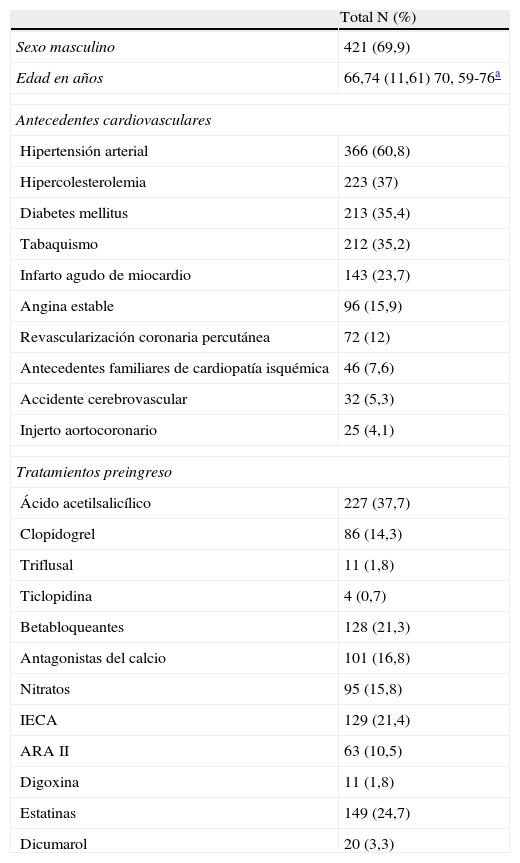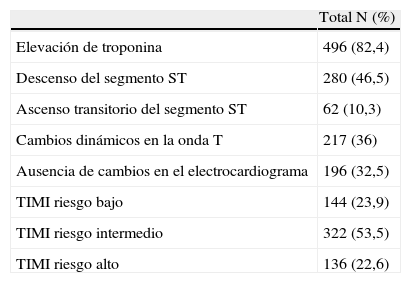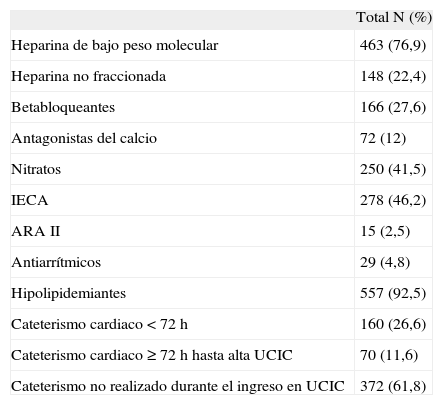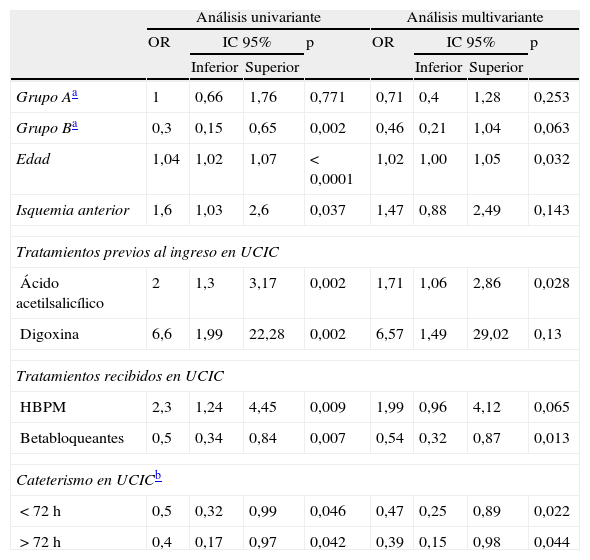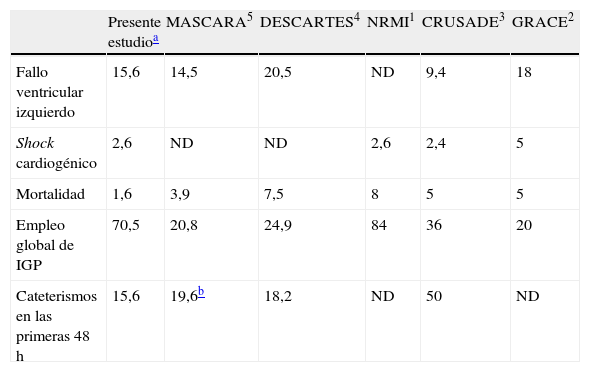La frecuencia de la insuficiencia ventricular izquierda (IVI) en las fases precoces del síndrome coronario agudo sin elevación del segmento ST (SCASEST) no está descrita en la actualidad. El objetivo de este estudio es describir por vez primera la frecuencia de esta complicación en la evolución inicial del SCASEST y evaluar su asociación a otras intervenciones.
Pacientes y métodoEstudio observacional de cohortes prospectivo y multicéntrico realizado en unidades de cuidados intensivos y coronarios (UCIC). Se incluyeron pacientes con SCASEST ingresados en las primeras 24h de evolución. El desenlace principal fue la aparición de IVI. Se evaluó la asociación entre esta y variables clínicas y terapéuticas.
ResultadosSe produjo IVI en el 15,6% de los pacientes. La realización de angiografía coronaria (AC) durante el ingreso en la UCIC fue una variable protectora frente al desenlace principal, realizada tanto antes de las 72horas (odds ratio [OR] 0,47; intervalo de confianza del 95% [IC 95%] 0,25-0,89; p=0,022), como más tarde (OR 0,39; IC 95% 0,15-0,98; p=0,044). La administración de betabloqueantes se mostró como variable protectora frente a la aparición de IVI (OR 0,54; IC 95% 0,32-0,87; p=0,013). La toma de ácido acetilsalicílico antes del ingreso en la UCIC supuso un mayor riesgo de IVI (OR 1,74; IC 95% 1,06-2,86; p=0,028). La edad fue factor de riesgo de presentar IVI (OR 1,02; IC 95% 1,00-1,05; p=0,032).
ConclusionesLa realización de AC precoz y la administración de betabloqueantes aparecen como capaces de disminuir la aparición de IVI. La toma previa de ácido acetilsalicílico y la edad se asociaron a la aparición de IVI, pudiendo reflejar enfermedad cardiovascular de larga evolución.
The frequency of left ventricular failure (LVF) in the early stages of non-ST-segment elevation acute coronary syndrome (NSTE ACS) has not been described so far. The objective of this study is to describe for the first time the frequency of LVF in the early course of NSTE ACS and to assess its association with other interventions.
Patients and methodObservational prospective cohort multicenter study in intensive and coronary care units (ICCU). Patients with NSTE ACS admitted within 24h after onset were included. Main outcome was the occurrence of LVF. We evaluated the association between LVF and clinical and therapeutic variables.
ResultsLVF occurred in 15.6% of patients. Coronary angiography (CA) during admission to the ICCU was a protective variable against the main outcome, performed before 72h (odds ratio [OR] 0.47; 95% confidence interval [95% CI] 0.25-0.89; P=.022) and later (OR 0,39; 95% CI 0,15-0,98; P=.044). The administration of beta-blockers was a protective variable against the occurrence of LVF (OR 0,54; 95% CI 0,32-0,87; P=.013). Patients receiving acetylsalicylic acid before admission to the ICCU had a higher risk of developing LVF (OR 1.74; 95% CI 1.06-2.86; P=.028). Age was also a factor of risk for LVF (OR 1.02; 95% CI 1.00-1.05; P=.032).
ConclusionsCA and beta-blockers can decrease the occurrence of LVF. The association between previous administration of acetylsalicylic acid and age with the occurrence of LVF may reflect long-standing cardiovascular disease.






